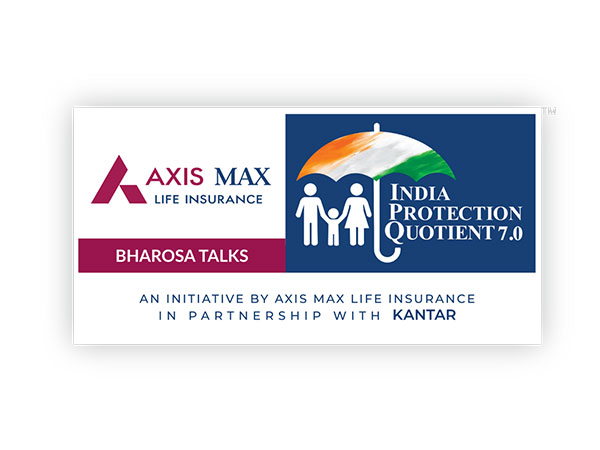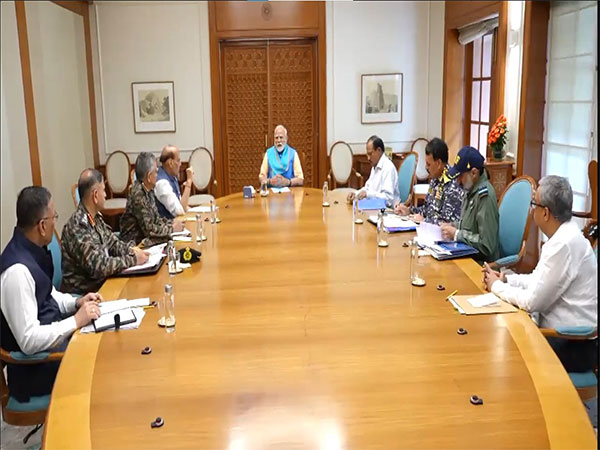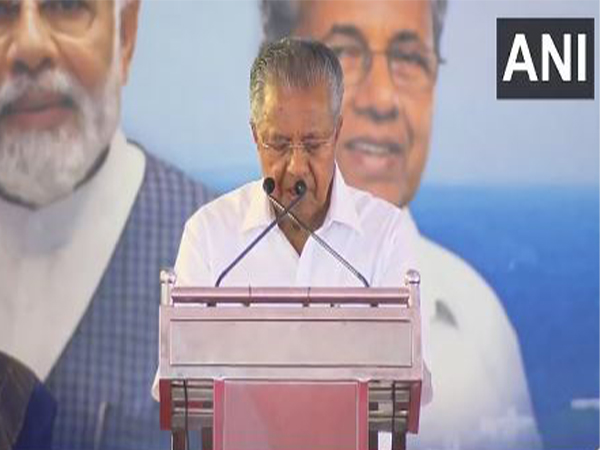VMPL
New Delhi [India], May 10: Axis Max Life Insurance Ltd. {formerly known as Max Life Insurance Company Ltd.} (“Axis Max Life”/ “Company”), has unveiled the findings of the seventh edition of its flagship survey – India Protection Quotient survey (IPQ) conducted in partnership with KANTAR, the world’s leading marketing data and analytics company. Tapping 6,360 households across 25 Indian cities, the survey has been uncovering urban India’s pulse on financial protection.
Axis Max Life is launching the India Protection Quotient 7.0 under the unified narrative of ‘Bharosa Talks’ that will spotlight India’s evolving financial and protection mindset. Through this platform, Axis Max Life aims to amplify real voices across demographics–urban, rural, salaried, gig workers, and retirees–offering authentic insights into how India views protection, planning, and long-term security. As financial anxieties shift over time and aspirations evolve, Bharosa Talks will serve as a critical pulse for industry, regulators, and policymakers to understand emerging consumer priorities.
As per IPQ 7.0, urban India’s Protection Quotient has climbed to 48, up from 35 in 2019, marking continued progress in the country’s financial preparedness. Life insurance ownership has reached an all-time high, with 78% of urban Indians owning one or more products, while the Knowledge Index has improved to 63 up by two points, indicating increased awareness and understanding of life insurance.
In a post-pandemic recovery milestone, urban India’s financial security has hit 68%, surpassing the pre-pandemic peak of 66% (IPQ 1.0), and rebounding strongly from a pandemic low of 57%. For the first time in seven editions, ‘Cover’ has overtaken ‘Premium’ as the key consideration in term life insurance purchase, with 3 in 4 urban respondents prioritizing coverage over cost.
In IPQ 7.0, Metros have seen a 3-point jump in the Protection Index on the back of increased ownership of life insurance (from 83% in IPQ 6.0 to 86% in IPQ 7.0) and improved sense of financial security (from 69% in IPQ 6.0 to 71% in IPQ 7.0). Tier-1 cities have also seen a significant improvement across parameters like Knowledge Index (from 58 in IPQ 6.0 to 62 in IPQ 7.0), Life Insurance Ownership (up from 73% in IPQ 6.0 to 77% in IPQ 7.0), and Security Levels (from 63% in IPQ 6.0 to 67% in IPQ 7.0).
Prashant Tripathy, CEO and Managing Director, Axis Max Life Insurance said, “India Protection Quotient, as part of ‘Bharosa Talks’ has evolved into a powerful barometer of India’s financial resilience, acting as a catalyst for driving India’s protection narrative forward. This year’s record Protection Quotient, alongside all-time high life insurance ownership, reflects a decisive shift in consumer priorities — from cost sensitivity to genuine protection needs. Yet, the widening gender gap in financial security calls for deeper, more inclusive interventions. At Axis Max Life, we remain committed to strengthening this momentum, driving awareness, and building a more comprehensively protected India.”
NOTES TO THE EDITOR:
The following findings reveal insights that highlight urban India’s shift in attitude and approach towards financial preparedness studied by India Protection Quotient 7.0:
A. FINANCIAL PREPAREDNESS OF URBAN INDIANS
Urban India’s Protection Quotient Climbs to 48; Life Insurance Ownership Peaks at 78%
Urban India continues its upward journey in financial preparedness, with the Protection Quotient rising from 35 in IPQ 1.0 to 48 in IPQ 7.0. Life insurance ownership has reached a new high of 78%, reflecting growing adoption and trust in life insurance products. The Knowledge Index has also shown sustained progress, climbing from 39 in IPQ 1.0 to 63 in the latest edition–indicating deeper awareness and understanding among consumers. In a significant post-pandemic recovery milestone, Security Levels have now surpassed pre-COVID figures, reaching 68%, a notable improvement from the dip to 57% during the pandemic. These trends reflect not just recovery, but a renewed focus on long-term financial protection across urban India.
Significant Increase in Financial Protection across town-classes; South Zone Remains Most Financially Prepared
South India retains its seven-year lead, driven by increased term insurance (33% to 37%) and savings product ownership (42% to 46%). West India has significantly closed the gap, achieving the highest term plan ownership ever recorded in IPQ history (41%). The North also improved its Protection Quotient through better term plan uptake (28% to 31%). The East, however, remains behind with stagnant ownership despite growing awareness (53% to 57%). Encouragingly, a significant increase in life insurance ownership has been seen across town-classes including Metros, Tier 1, and Tier 2 cities, with Tier 2 cities showing notable progress (62% to 66% in life insurance ownership), marking a steady rise in penetration beyond urban cores.
Children’s Future Drives Financial Planning
Saving for a child’s education (61%) and marriage expenses (44%) continues to top urban India’s list of financial priorities. These long-term goals have seen a noticeable rise compared to IPQ 6.0, underlining a growing commitment to family-oriented financial planning. Retirement planning (37%) and buying a house (36%) follow as the next big objectives. This shift signals a sharper focus on long-term stability over short-term or discretionary spending.
B. URBAN OUTLOOK TOWARDS TERM INSURANCE
Term Insurance Awareness Rises to 74%, But 1 in 4 cite cost concerns
Despite a notable rise in awareness and ownership of term insurance, from 70% to 74% and 31% to 34% respectively, high premiums continue to deter many from adoption. For nearly 1 in 4 individuals, term insurance affordability remains a significant hurdle, with an increase in those citing lack of funds as a barrier (21% to 25%). While saving and ULIP products also witnessed a modest uptick in awareness and ownership, the data suggests that improving accessibility and addressing financial constraints is key to driving wider term plan adoption.
Online Purchase Channels Gain Ground on the Back of Affordability and Ease
Online platforms are steadily emerging as a preferred mode for term insurance purchase, with adoption rising from 18% in IPQ 6.0 to 22% in IPQ 7.0. The digital channel’s appeal lies in its cost-effectiveness, access to comprehensive policy information, and quicker, more convenient transactions. With ease of comparison and seamless access to support, online purchase is fast becoming a go-to option for today’s digitally savvy insurance buyers.
3 in 4 prioritize cover over cost, with 56% confident in their protection
For the first time in seven editions, cover has surpassed premium as the primary consideration for term life insurance purchase, with 3 out of 4 individuals now prioritizing cover over cost. Additionally, 56% of respondents believe their current term plan offers adequate protection for their family’s future.
C. DEMOGRAPHIC INSIGHTS
MEN & WOMEN: Working Men’s IPQ Rises Sharply, While Working Women Show Modest Growth Amid Higher Financial Anxieties
This year marks a divergence in protection levels among working men and women. While men saw their Protection Quotient rise to 50 (from 47), working women’s Protection Quotient remained at 48. Women reported lower financial security for key life milestones such as retirement, children’s education, and marriage. Their heightened concerns about inflation, medical expenses, and the loss of a breadwinner emphasize the need for more gender-sensitive financial strategies.
GEN-Z & NON MILLENIALS: Gen-Z leads with strong mid-term financial planning; 2 in 3 own life insurance
Gen-Z has emerged as a standout cohort, boasting a Protection Quotient of 41, with two-thirds owning life insurance products. They surpass non-millennials in purposeful planning, showing strong intent toward mid-term goals such as buying a house, a car, or planning vacations. Their disciplined saving behavior and willingness to invest reflect a growing sense of financial independence and a modern approach to balancing lifestyle and security.
SALARIED VS SELF-EMPLOYED: Salaried Class Leads in Protection Quotient; Self-Employed Show Security Gains but Lag in Insurance Ownership
Salaried individuals continue to lead with a Protection Quotient of 52, driven by gains across knowledge, ownership, and security. Term insurance ownership for the Self-Employed rose by 2 points, bolstered by improved financial confidence and adoption of market-linked products. However, savings capabilities dipped, with a 3-point drop in the ability to save from household budgets, highlighting ongoing financial stress in this segment.
Read more at – https://www.axismaxlife.com/maxlife-ipq
About India Protection Quotient
Instituted in 2019, India Protection Quotient is an annual Survey by Axis Max Life Insurance in association with Kantar aimed to understand the pulse of the Indian consumers in the financial protection space. Launched with the underlying objective to increase penetration of Term insurance as the most fundamental and economical form of life insurance, the survey aims to reveal the state of Urban Indians with regards to current financial security levels, changing savings & investment patterns, key anxieties & triggers of financial protection in a contemporary world. India Protection Quotient is a proprietary tool developed by Axis Max Life in partnership with Kantar to gauges the degree to which Indians feel protected from future uncertainties on a scale of 0 to 100. It is based on the attitudes, mental preparedness around future uncertainties, awareness, and ownership of life insurance product categories (Term, endowment and ULIP).
Disclaimer:
The study is conducted in top 25 Urban metro, Tier 1 and Tier 2 cities; hence, its findings are representative of metro, Tier 1 and Tier 2 cities of Urban India only.
– Metro – Delhi, Kolkata, Chennai, Bangalore, Hyderabad, Mumbai
-Tier 1 – Ludhiana, Jaipur, Lucknow, Patna, Bhubaneshwar, Vizag, Ahmedabad, Bhopal, Pune
– Tier 2 – Dehradun, Moradabad, Guwahati, Bokaro, Kolhapur, Jamnagar, Raipur, Ujjain, Hubli-Dharwad, Tiruchirappalli
– IPQ 7.0 vs IPQ 6.0 data comparison is amongst 25 markets only [6 metros, 9 Tier 1 and 10 Tier]
– The minimum sample to conclude any findings of the study is 270 with an error margin of +-5.964
The information collected through this survey and the results published are intended for general guidance and informational purposes only. Axis Max Life disclaims any liability for any loss, damage, or decisions arising from the use of this survey or the results provided.
About Axis Max Life Insurance
Axis Max Life Insurance Limited, formerly known as Max Life Insurance Company Ltd., is a Joint Venture between Max Financial Services Limited (“MFSL”) and Axis Bank Limited. Axis Max Life Insurance offers comprehensive protection and long-term savings life insurance solutions through its multi-channel distribution, including agency and third-party distribution partners. It has built its operations over two decades through a need-based sales process, a customer-centric approach to engagement and service delivery and trained human capital. As per the annual audited financials for FY2023-24, Axis Max Life Insurance has achieved a gross written premium of INR 29,529 Cr.
About Kantar
Kantar is the world’s leading marketing data and analytics business and an indispensable brand partner to the world’s top companies. We combine the most meaningful attitudinal and behavioural data with deep expertise and advanced analytics to uncover how people think and act. We help clients understand what has happened and why and how to shape the marketing strategies that shape their future.
(ADVERTORIAL DISCLAIMER: The above press release has been provided by VMPL. ANI will not be responsible in any way for the content of the same)
Disclaimer: This story is auto-generated from a syndicated feed of ANI; only the image & headline may have been reworked by News Services Division of World News Network Inc Ltd and Palghar News and Pune News and World News
HINDI, MARATHI, GUJARATI, TAMIL, TELUGU, BENGALI, KANNADA, ORIYA, PUNJABI, URDU, MALAYALAM
For more details and packages

















